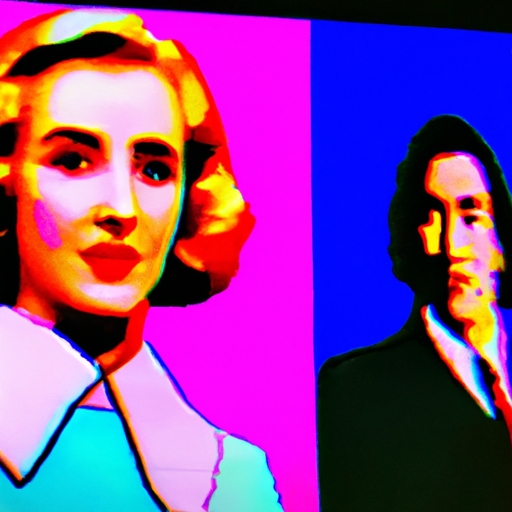Table of Contents
- Ethical Considerations in AI-Generated Illustration
- The Rise of AI-Generated Illustration
- The Ethical Implications
- 1. Attribution and Plagiarism
- 2. Bias and Representation
- 3. Devaluation of Human Artistry
- Responsible Use and Human Oversight
- 1. Transparent Attribution
- 2. Diverse and Representative Training Datasets
- 3. Human Intervention and Oversight
- 4. Collaboration between AI and Human Artists
- Conclusion
Ethical Considerations in AI-Generated Illustration

Artificial Intelligence (AI) has revolutionized various industries, including the field of illustration. AI-generated illustrations have gained popularity due to their ability to create stunning visuals quickly and efficiently. However, as with any technology, there are ethical considerations that arise when using AI in the creation of illustrations. This article explores the ethical implications of AI-generated illustration and discusses the importance of responsible use and human oversight in this emerging field.
The Rise of AI-Generated Illustration
AI-generated illustration refers to the use of machine learning algorithms to create visual content, such as drawings, paintings, and digital art. These algorithms are trained on vast datasets of existing artwork, enabling them to learn and mimic various artistic styles and techniques. The result is a computer-generated illustration that closely resembles the work of a human artist.
The rise of AI-generated illustration can be attributed to several factors:
- Efficiency: AI algorithms can create illustrations at a much faster rate than human artists. This efficiency is particularly valuable in industries that require a high volume of visual content, such as advertising and marketing.
- Consistency: AI algorithms can consistently produce illustrations in a specific style or theme, ensuring brand consistency and reducing the need for manual adjustments.
- Accessibility: AI-generated illustration democratizes the creation of visual content by eliminating the need for specialized artistic skills. This opens up opportunities for individuals and businesses who may not have access to traditional artists.
The Ethical Implications
While AI-generated illustration offers numerous benefits, it also raises ethical concerns that need to be addressed. The following are some of the key ethical considerations in the field:
1. Attribution and Plagiarism
One of the primary concerns with AI-generated illustration is the issue of attribution and plagiarism. When an AI algorithm creates an illustration, it is often difficult to determine the original source of the artwork. This raises questions about intellectual property rights and the fair use of existing artwork.
Without proper attribution, AI-generated illustrations can inadvertently infringe upon the copyrights of human artists. Additionally, AI algorithms can potentially reproduce existing artwork without the knowledge or consent of the original artist, leading to issues of plagiarism.
2. Bias and Representation
AI algorithms are trained on large datasets, which can inadvertently contain biases present in the data. This can result in AI-generated illustrations that perpetuate stereotypes or exclude certain groups of people. For example, if the training dataset predominantly consists of artwork featuring individuals of a specific race or gender, the AI algorithm may struggle to accurately represent other demographics.
It is crucial to ensure that the training datasets used for AI-generated illustration are diverse and representative of different cultures, races, genders, and perspectives. Human oversight and intervention are necessary to identify and rectify any biases that may arise in the AI-generated illustrations.
3. Devaluation of Human Artistry
AI-generated illustration has the potential to devalue the work of human artists. As AI algorithms become more advanced, they can produce illustrations that are indistinguishable from those created by human artists. This raises questions about the uniqueness and originality of AI-generated artwork.
Furthermore, the ease and accessibility of AI-generated illustration may lead to a decline in demand for human artists, potentially impacting their livelihoods. It is essential to strike a balance between the use of AI technology and the recognition and support of human artistry.
Responsible Use and Human Oversight
Addressing the ethical considerations in AI-generated illustration requires responsible use and human oversight. The following strategies can help mitigate the ethical implications:
1. Transparent Attribution
AI-generated illustrations should be clearly attributed to the AI algorithm that created them. This ensures transparency and acknowledges the role of AI in the creative process. Additionally, proper attribution allows for the recognition and protection of the intellectual property rights of human artists.
2. Diverse and Representative Training Datasets
Training datasets used for AI-generated illustration should be diverse and representative of different cultures, races, genders, and perspectives. This helps minimize biases in the resulting illustrations and promotes inclusivity and fairness.
3. Human Intervention and Oversight
Human oversight is crucial in the creation of AI-generated illustrations. Human artists and designers should be involved in the process to ensure that the output aligns with ethical standards and artistic intent. They can identify and rectify any biases, stereotypes, or inaccuracies that may arise in the AI-generated illustrations.
4. Collaboration between AI and Human Artists
Rather than replacing human artists, AI-generated illustration can be seen as a tool for collaboration. Human artists can leverage AI algorithms to enhance their creative process, explore new styles, and experiment with different techniques. This collaboration between AI and human artists can result in unique and innovative artwork.
Conclusion
AI-generated illustration offers numerous benefits in terms of efficiency, consistency, and accessibility. However, it is essential to address the ethical implications associated with this technology. Responsible use, transparent attribution, diverse training datasets, human oversight, and collaboration between AI and human artists are key to ensuring that AI-generated illustrations are created ethically and contribute positively to the field of illustration. By considering these ethical considerations, we can harness the power of AI while upholding the values of creativity, inclusivity, and respect for human artistry.


